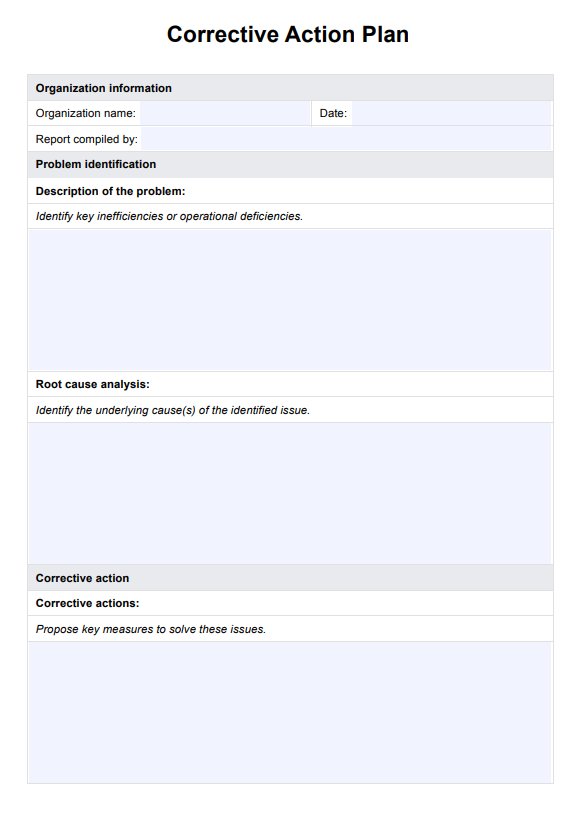The corrective action plan format usually includes sections for identifying the issue, determining root causes, proposing corrective actions, assigning responsibilities, setting timelines, and monitoring progress.

Corrective Action Plan
Get a healthcare Corrective Action Plan Template for quality improvement. Meet regulatory standards, streamline processes, and enhance patient care.
Corrective Action Plan Template
Commonly asked questions
CAP templates improve healthcare business operations. They address issues impacting patient care, operational efficiency, or regulatory compliance and are employed in response to challenges identified through quality improvement initiatives, patient feedback, or regulatory audits.
Corrective Action Plan Templates guide practitioners systematically through improving healthcare administration. They facilitate documenting identified issues, root cause analysis, proposed actions, responsible parties, timelines, and ongoing monitoring. The templates serve as a structured approach to problem-solving.
EHR and practice management software
Get started for free
*No credit card required
Free
$0/usd
Unlimited clients
Telehealth
1GB of storage
Client portal text
Automated billing and online payments











